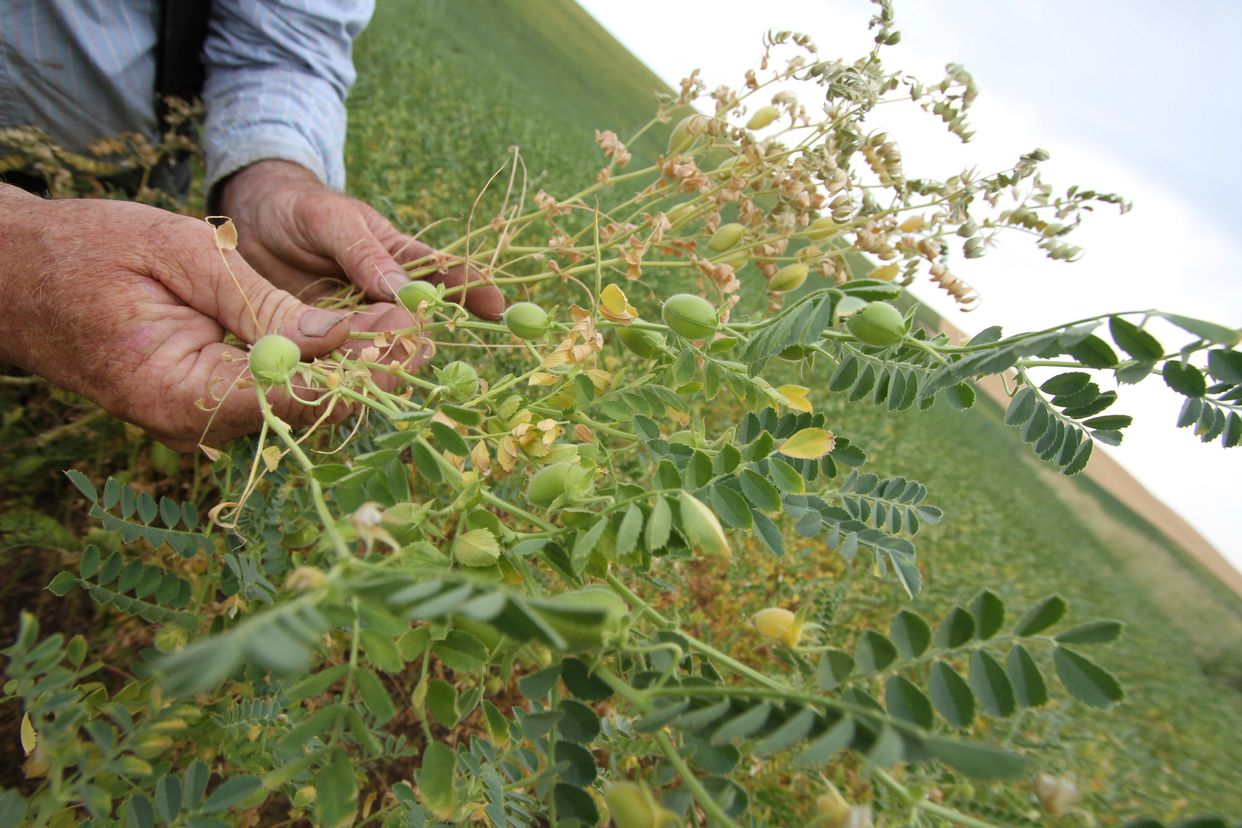
Image: Dry Pea & Lentil Council via AP
For many of us, hummus is already a snack staple but its popularity as a healthy and filling snack is steadily growing. As NPR reported, Americans spent four times as much money on hummus in the marketplace last year than they did 10 years ago: more than $800 million in 2018 alone. The main ingredient in hummus is the mighty chickpea (a subcategory of legumes called pulses) which as a crop is not only healthy for people but good for the planet as well.
Chickpeas for the Planet: As NPR explained, “unlike corn or wheat, these pulses fix their own nitrogen from the atmosphere, leaving extra stores of the nutrient in the soil for future crops to consume. For this reason, pulses can play a vital role in crop rotations, especially those that don’t rely on chemical fertilizers. What’s more, if managed well, these crops can be part of a farming system that sequesters carbon from the atmosphere and helps mitigate climate change.”
How Does It Happen?: As Patrick Molecki, soil and nutrient management specialist with Saskatchewan Ministry of Agriculture explained, pulses “take nitrogen out of the air and form that into a useable form of nitrogen which plants can use as ammonium that can be put into other by-products that plants use.”
Good for Farmers: In developing nations, growing legumes can help farmers escape poverty traps by bringing nutrients back into depleted soil so that their land can become profitable. Domestically, the more we eat chickpeas the better the economic outlook for American farmers as most of the chickpeas that are grown in the United States are shipped abroad to unreliable foreign markets. Already we’re seeing in wheat-growing strongholds across America that farmers are opting to grow more pulses like chickpeas.
Why This Matters: Growing legumes can reduce the need for nitrogen fertilizer which is the root cause of all sorts of environmental pollution, like toxic algal blooms. Around the world, we must curb our use of these synthetic fertilizers while also minimizing our consumption of meat, chickpeas and other pulses are great foods with which to supplement our diets as they’re nutrient and protein-dense and very versatile.
July 12, 2019 » chickpeas, farmers, farming, legumes, pulses


